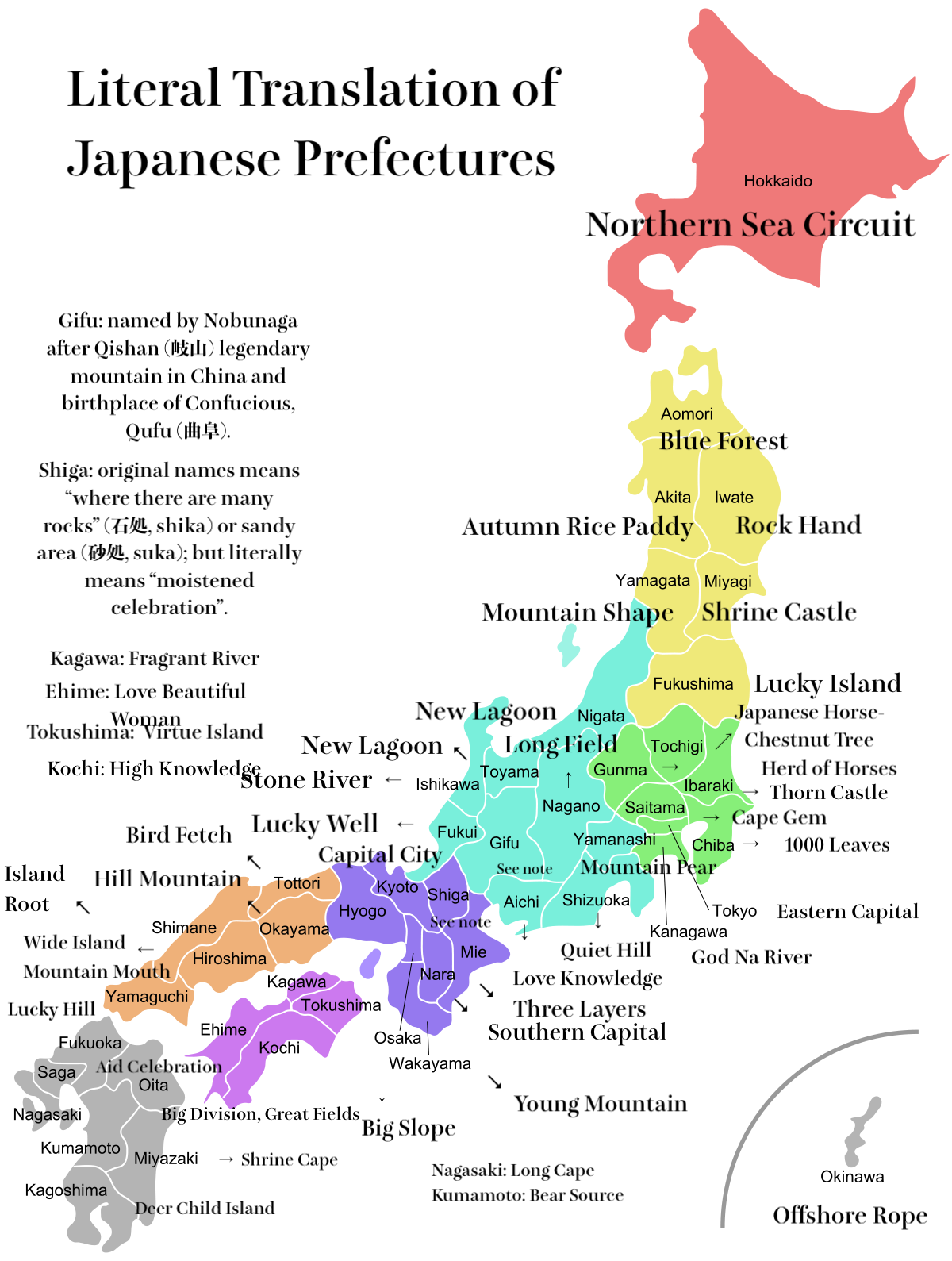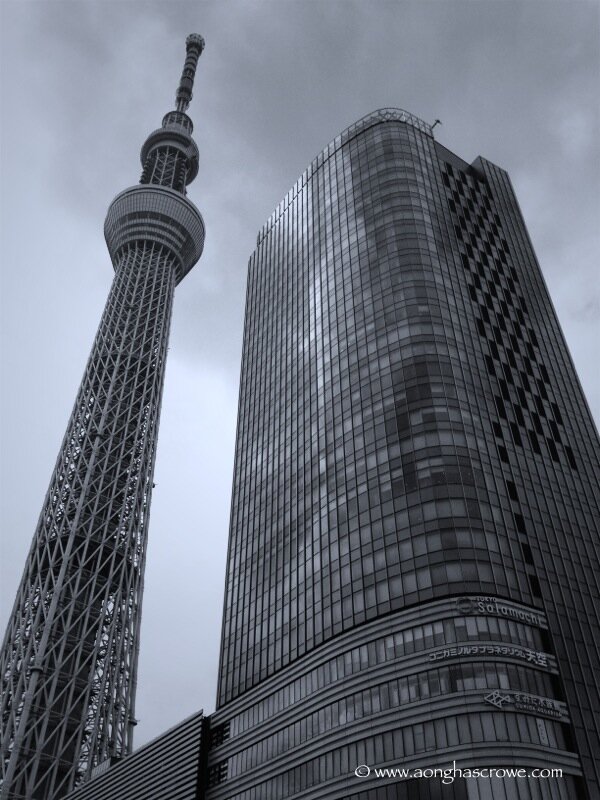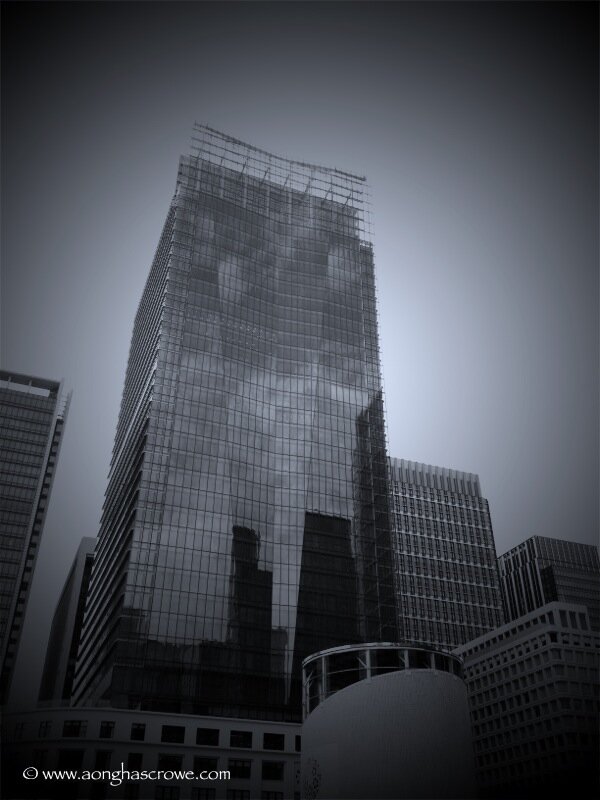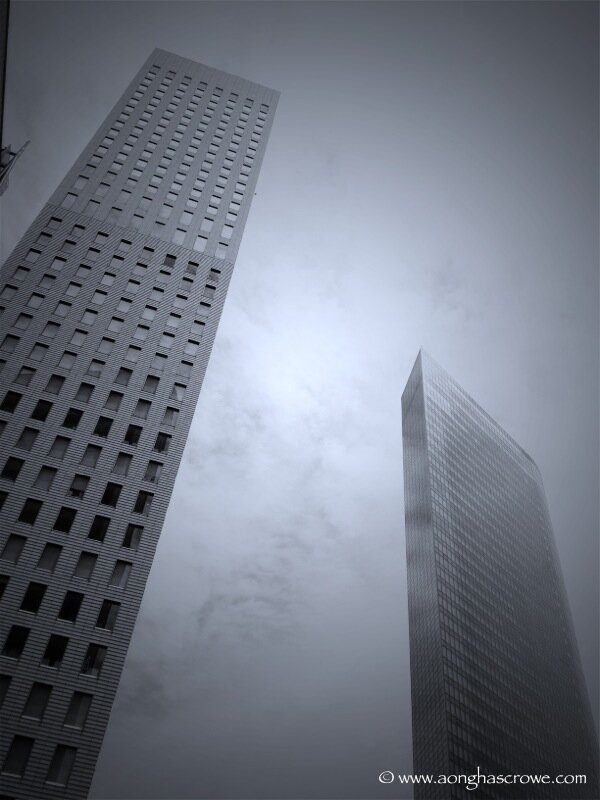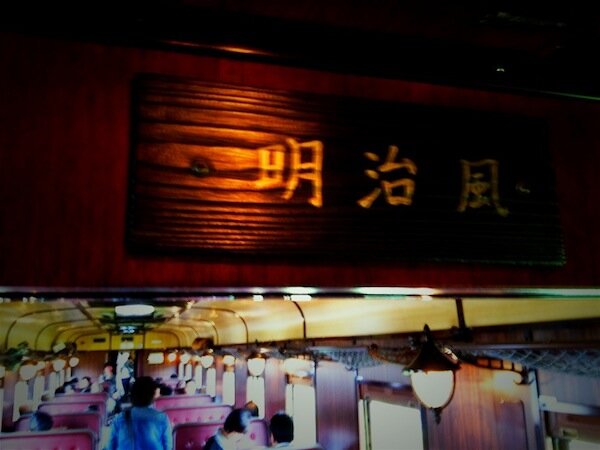北海道
Hokkaidō: literally Northern Sea Circuit or Road.
In the Ainu language, it is called アイヌ・モシル, Aynu mosir, which means "Land of the Ainu [people]". Hokkaido was formerly known as Ezo, Yezo, Yeso, or Yesso. Six names for the region were proposed in the Meiji Period, including Kaihokudō (海北道) and Hokkaidō (北加伊道). Hokkaidō written 北海道 was chosen, one, for its similarity to 東海道 (Tōkaidō), and, two, because the Ainu called the region Kai.
青森
Aomori: literally “Blue Forest”
The Japanese word for blue (青) can also mean dark green, so Aomori could be translated as “green forest”. The name Aomori comes from the village of Aomori to which the capital of the newly established prefecture was moved in September of Meiji 4 (1871). The name Aomori had been given to a newly constructed port in the Hirosaki Han (feudal domain) in the early Edo Period (1624). It is said the name originated from the dark green forests that could be seen from the sea.
Ao(i) (青い) is used for a number of things in nature: 青葉 (aoba, “green leaves”, 青りんご (aoringo, “green apple”), 青々とした新緑 (aoao toshita shinryoku, “lush new green leaves”). Green traffic lights (青信号, aoshingō; lit. blue signal) reflected the color found in nature.
秋田
Akita: lit. “Autumn Rice Paddy/Field”
Probably named after the military settlement called “Akita Jō that was built in 733. The fort was the base from which operations to colonize the region and subdue the native Emishi people (lit. “shrimp barbarians”), an ethnic group, possibly distinct from the Ainu and Jōmon, who lived in the Tōhoku region.
岩手
Iwate: lit. “Rock Hand”
Several theories about the origin of the name "Iwate" exist, but the most well known is the tale Oni no Tegata, which is associated with the Mitsuishi or Three Rocks Shrine in Morioka. The rocks are said to have been thrown down into Morioka by an eruption of Mt. Iwate. According to the legend, there once was a devil who tormented the local people. When the people prayed to the spirits of Mitsuishi for protection, the devil was immediately shackled to these rocks and forced to make a promise never to trouble the people again. As a seal of his oath, the devil made a handprint on one of the rocks, thus giving rise to the name Iwate.
山形
Yamagata: lit. “Mountain Shape”
The name comes from the name of a town, Yamagata (山方), meaning near the mountains.
宮城
Miyagi: lit. “Shrine Castle”
The name was taken from the centrally located Miyagi Gun (county or district) when the name changed from Sendai Prefecture in 1872.
新潟
Niigata: lit. “New Lagoon”
Named after the capital of the prefecture. The city itself was named after a place name that was recorded in 1520. The reason for the name, however, was not written, but several theories exist. One, there was a kata or lagoon at the mouth of the Shinano River. Another theory states that in the Shinano River a new island built up naturally over time and was the site of a hamlet called Niigata, but spelt with a different kanji, 新方. And so on.
福島
Fukushima: lit. “Lucky Island”
The prefecture is named after Fukushima-jō, a castle that has undergone a number of name changes over the years. Originally called Daibutsu-jō or Osaragi-jō (大仏城, lit. “Great Buddha Castle”), the Date Clan called it Suginomejō (杉目城 or 杉妻城). In 1592, the area was conquered during the Warring States Period in the late 16th century and became the center of the domain. It was renamed Fukushima as this was considered a more auspicious name.
群馬
Gunma: lit. “Herd [of] Horses”
Originally Kuruma no Kōri, where Kuruma was written with a single character (車, wheel or vehicle). In the early Nara Period (710-794), it became popular to name counties (郡, kōri) or and countries (郷, gō) with two kanji. Gunma, which means “horses herd together”, became the new name. From ancient times, the area had been known as a place where valuable horses roamed.
栃木
Tochigi: lit. “Japanese Horse Chestnut Tree”
Tochigi Prefecture is one of three prefectures, the other two being Yamanashi and Okinawa, in which the capital is located in a city with a name different from the prefecture’s. In the case of Tochigi, the capital is located in Utsunomiya. Tochigi City, however, did serve as the capital city for a spell during the Meiji Period and the prefecture was named after the capital at that time. The name of the city is believed to have come from Japanese horse-chestnut trees that were located in the center of the land that became the city. Another theory is that the name actually means “ten chigi” (十千木, pron. “tōchigi”). Chigi are forked roof finials found in Japanese and Shinto architecture.
茨城
Ibaraki: lit. “Thorn Castle”
There is a lot of confusion as to how to read 茨城. Many people, including myself say “IbaraGI”. The problem was so common, the prefecture conducted an online campaign to teach the correct pronunciation “IbaraKI”, but sometimes you just can’t teach old dogs new tricks. There are three main reasons for the mistake. For starters, that’s how they say the prefectural name in the local dialect, so, um, what’s the problem; two, IbaraGI City in Kansai, which is spelled with the same kanji; and, three, the prefecture MiyaGI which uses the same kanji (城). The name Ibaraki comes from Ibaraki District (茨城郡) in the center of the prefecture. There are two theories regarding the name. One claims that a warrior from the imperial court named Kurosaka no Mikoto destroyed the indigenous tribes wielding thorny branches as weapons. Another theory is that a castle of thorns was built to protect people from bandits. Both stories are similar to other legends that were promoted to establish the authority of the Yamato race as its influence spread throughout Japan.
富山
Toyama: lit. “Wealth/Prosperous Mountain”
The name has its roots in the Muromachi Period (1336~1573) when the area was called 越中国外山郷 (Etchū no Kuni Toyoma-gō), or the “Outer Mountains of Etchū Province”. Toyama spell 富山 was first seen in the Sengoku (Warring States) Period (1467~1615). By the Edo Period (1603~1868), both spellings were being used.
長野
Nagano: lit. “Long Field”
May be a reference to the Nagano Basin of the Chūbu Region. Following the Meiji Restoration, Nagano became the first established modern town in the prefecture on April 1, 1897.
埼玉
Saitama: lit. “Cape Gem”
The name come from Sakitama Mura (埼玉村) in Saitama District, modern-day Gyōda City, and is believed to have originated from the Sakitama Kofun in the city and may have come from the name Sakitama (埼魂), meaning the action of the gods to bring fortune. Another theory states that it comes from Sakitama (前玉 or 佐吉多万) which are mentioned in the Nara Period collection of waka poetry, Manyōshū (万葉集) which was compiled after 759. The pronunciation of Sakitama predates Saitama and reflects a ki→i shift, known as the i-onbin. Examples include:
「埼玉」 サキタマ → サイタマ
「大分」 オオキタ → オオイタ
「次手」 ツギテ → ツイデ 「ついで」
「月立ち」 ツキタチ → ツイタチ 「朔日」
「咲きて」 サキテ → サイテ 「咲いて」
「急ぎて」 イソギテ → イソイデ 「急いで」
「高き」 タカキ → タカイ
「久しき」 ヒサシキ → ヒサシイ
This same shift can be seen in the dialects of western Japan where しないで is often pronounced せんで or せいで: (セズテ → センデ → セイデ). If I am not mistaken, the shift took place in the Heian Period. (Still trying confirm this.)
千葉
Chiba: lit. “One Thousand Leaves”
There are a number of theories regarding the origin of the prefecture’s name. One of them comes from a sakimori no uta (防人歌), a poem in the Manyōshū collection (Vol. 20, 4387), penned by a soldier who was sent to protect the northern coast of Kyūshū. The conditions under which a sakimori traveled and lived were often harsh and their poems reflected this. Ōtabe no Tarihito was one such soldier from the District of Chiba in Shimōsa Province and he penned the following poem:
Original written in man’yōgana:
Original written in man’yōgana:
知波乃奴乃
古乃弖加之波能
保々麻例等
阿夜尓加奈之美
於枳弖他加枳奴
Transliteration:
千葉の野の
児手柏の
ほほまれど
あやに愛しみ
置きて高来ぬ
Romanization:
Chiba no nu no
Konotekashihano
Hohomaredo
Ayanikanashimi
Okitetagakinu
Modern Japanese: 千葉の野の児手柏(このてかしわ)の若葉のように、まだ初々しくて可愛いいあの子を置いてはるばるやってきた。
Interpretation: 千葉の野の、児手柏(このてかしは)の(花のつぼみの)ように、初々しくってかわいいけれど、とてもいとおしいので、何もせずに(遠く)ここまでやってきました。
English Translation: I’ve come from far away, leaving that pure and innocent girl behind like the young leaves of konote oak of the Chiba meadow,
東京
Tōkyō: lit. “Eastern Capital”
Originally a fishing village, named Edo (江戸, lit. “bay/inlet entrance” or “estuary”), the city became the de facto political center of Japan in 1603 as the seat of the Tokugawa Shōgunate. When the shōgunate fell in 1868, the imperial capital of Japan, along with the imperial family, was moved to Edo and the city renamed. The addition of the kanji 京 (kyō) was in line with the East Asian tradition—Beijing (北京, Norther Capital); Nanjing '(南京, Souther Capital), etc.
福井
Fukui: lit. “Lucky Well”
The name of the prefecture was originally written 福居 and refers to the castle that was built on the ruins of Kitanoshō Castle in 1601 by the second son of Tokugawa Ieyasu following his victory in the Battle of Sekigahara the year before. The castle was renamed "Fukui Castle" by the third daimyō of Fukui Domain, Matsudaira Tadamasa, in 1624 after a well called Fukunoi, or "good luck well", the remains of which can still be seen today.
岐阜
Gifu: Wanting to be considered not only the unifier of Japan but also a great mind, Oda Nobunaga (1534-1582) named the region’s capital Gifu, after Qishan (岐山), a legendary mountain in China and Qufu, the birthplace of Confucius (曲阜).
愛知
Aichi: lit. “Love and Knowledge”
Aichi was the name of the gun (district) which was located where the downtown of modern-day Nagoya City is located and was originally written ayuchi (年魚市) and refers to the Ayuchigata Inlet, mentioned in the Manyōshū collection of classical Japanese poetry of the Nara Period.
「桜田へ鶴(たず)鳴き渡る―潮干にけらし鶴鳴き渡る」
〈万葉集•271〉
意味・・桜田の方へ、あれあのように鶴が群れ鳴き渡って いく。 これで見ると、年魚市潟は潮干したものと 見える。 だから餌を求めて鶴が、あんなに鳴いて 羽ばたいて行くよ。 鶴は干潟に降りて餌を漁(あさ)る習性があるので 年魚市潟の方に飛んで行く鶴を見て潮干になった と想像して詠んだ歌です。
静岡
Shizuoka: lit. “Quiet Hill”.
Named after the Shizuoka Domain that existed in the area from 1869 to 1871 and was centered at Sunpu Castle (駿府城). Prior to that, the feudal domain was called Sunpu-han. The name Shizuoka was decided in 1869 by the political reforms of the hansekihōkan (版籍奉還) royal charter of July 25th of that year. The area around the prefectural office was known as fuchū (府中). Due to the similarity with the synonym fuchū (不忠, lit. “disloyalty”), the Meiji government suggest three other options: Shizuoka (静岡), Shizu (静), Shizujo (静城). The roots of the name “Shizuoka” itself is derived from Shizuhata-yama (賤機山), a 171-meter high mountain in the prefecture. Another word for 賤 (shizu) is iyashii (卑しい) which can mean “greedy”, “vulgar”, “shabby” or “humble”, as in a person of humble birth (卑しい生まれの人).
山梨
Yamanashi: lit. “Mountain Pear”.
From Yamanashi-gun, which was named after a famous ancient pear tear in the mountain behind the Yamanashi Oka Shrine in the Kasugai district (春日居町). There is a tendency to believe that the name derived from the mountain peaches that grew in the area, but according to the Fūdoki (風土記)—ancient reports on provincial culture that were presented to the monarch, and are considered to be the oldest written records from the Nara Period (710-794)—Yamanashi was formally written 山無瀬, 夜萬奈之, and 山平らす (Yamanarasu) in reference to the lack of hills and peaks in the Kōfu Basin (甲府盆地). Over time, Yamanarasu became Yamanashi. In the year Wado (和銅) 6 or 713 AD, the Wadokanrei was passed whereby the names of the provinces had to be written by the most commonly used version in existence at the time. Yamanashi written 山梨 was chosen.
滋賀
Shiga: lit. “Where there are many rocks”.
When the han system was abolished in 1871, eight prefectures were formed in the former Omi Province. A year later, they were unified into Shiga Prefecture. The name "Shiga Prefecture" came from "Shiga District" (滋賀郡) because Otsu, a city on the western coast of Lake Biwa and the capital of the prefecture today, was part of it. As for the origin of the name, there are several theories. The most dominant one claims that it comes from shika (シカ, 石処) which means “place with many stones”. The abundance of other “rocky” areas similarly named Shika have given this theory credence. Another claims that the name comes from suka (スカ, 砂処), meaning wetland or shoal (tidal sandbar).
Finally, there is some conjecture that the name derives from Shika no Shima (志賀島) in Hakata, Fukuoka, which was ruled by the Azumi people (阿曇氏), a seafaring warrior tribe in northern Kyūshū.
三重
Mie: lit. “Three Layers”.
The name Mie is believed to have been taken from the final words of Yamato Takeru (日本武尊 or 倭建命), a semi-legendary prince and son of the 12th Emperor of Japan who died in the Ise Province. As he was traveling from the region of modern-day Kuwana City (桑名市) towards Kameyama City to the south he passed through Mie district, where according to the Kojiki, he said:
Classical Japanese: 吾が足は三重の勾がりの如くして甚だ疲れたり
Transliteration: Wagahai-ga ashi-wa Mie no magari no gotokushite hanahada tsukaretari.
Modern Japanese: 私の足は三重の曲り餅のようになって、とても疲れた。
Translation: My legs were exhausted like twisted Mie magari-mochi.
Notes: まがり餅は米をこねて曲げてあげたお菓子。果たして「まがり」が「まがり餅」だと直結できるのかはよくわかりませんが――まぁ「三重のマガリのごとく」という文章から言うとまがり餅というか「三重のまがり」という造形のお菓子があったという方がすっきりしますね。それだけ「ヘトヘト」という意味でしょう。 ちなみにネットで見ると三重では鉄工業が盛んでその公害で足が曲がった人が実際にいた、という話を見かけましたが、うーん、まぁ、ねぇ。
京都
Kyōto: lit. “Capital City”.
Kyōto was originally called Kyō (京, capital; metropolis), Miyako (都, the capital), or even Kyō no Miyako (京の都) until the 11th century, when the city was renamed "Kyōto" (京都, lit. "capital city"), after the Middle Chinese kiang-tuo (or jīngdū in Mandarin). When the imperial palace moved from Kyōto to Tōkyō in 1868, Kyōto was briefly known as Saikyō (西京), or Western Capital, contrasting it from Tōkyō, the “Western Capital”.
Throughout Eastern Asia in ancient times, the city where the Tenshi (天子) or emperor lived was called Kyō (京) or Keishi (京師), meaning the “capital”. During China’s Jin Dynasty (266-420), however, the character 師 was often used in the “temple names” of emperors, so to avoid confusion—i.e. is this the name of a city or is it someone’s name—都 was adopted.
When Heian-kyō was first being established as the new capital, there was no consensus on how to call it and so the city was called by a number of names: Kyō, Keishi, and Kyōnomiyako.
奈良
Nara: lit. “Flat Land”
A number of different characters have been used to represent the name Nara, including 乃楽, 乃羅, 平, 平城, 名良, 奈良, 奈羅, 常, 那良, 那楽, 那羅, 楢, 諾良, 諾楽, 寧, 寧楽 and 儺羅. The most widely accepted theory for the name of the prefecture (i.e. “Flat Land”) comes from a 1936 study of place names by folklorist Kunio Yanagita (1875-1962) in which he wrote, “"the topographical feature of an area of relatively gentle gradient on the side of a mountain, which is called taira in eastern Japan and hae in the south of Kyushu, is called naru in the Chūgoku region and Shikoku (central Japan). This word gives rise to the verb narasu, adverb narashi, and adjective narushi." Other theories argue that the name is derived from from 楢 nara, meaning "oak”; that it means “to flatten or level (a hill)”; or that it comes from the Korean nara (나라: "country, nation, kingdom").
兵庫
Hyōgo: lit. “Troops Storage”
Named after the castle Hyōgo-jō that belonged to the Amagasaki Domaine and stood at Nakanoshima, Hyōgo Ward from 1581 to 1769. During the Edo Period, it became the seat of the jinya (陣屋) or an administrative headquarters for the province and housed the head of the administration and grain storehouse. Domains assessed at 30,000 koku (4.5 million kilograms) or less of rice had jinya instead of castles. The name itself dates back to Emperor Tenji (天智天皇, 661-672) when there was a tsuwamono (兵) gura (庫), or a place to keep warriors and weapons.
大阪
Ōsaka: lit. “Big Slope”
Wiki: Ōsaka means "large hill" or "large slope". It is unclear when this name gained prominence over Naniwa, but the oldest written evidence for the name dates back to 1496. By the Edo period, 大坂 (Ōsaka) and 大阪 (Ōsaka) were mixed use, and the writer Hamamatsu Utakuni, in his book "Setsuyo Ochiboshu" published in 1808, states that the kanji 坂 was abhorred because it "returns to the earth," and then 阪 was used. The kanji 土 (earth) is also similar to the word 士 (knight), and 反 means against, so 坂 can be read as "samurai rebellion," then 阪 was official name in 1868 after the Meiji Restoration. The older kanji (坂) is still in very limited use, usually onlyin historical contexts. As an abbreviation, the modern kanji 阪 han refers to Osaka City or Osaka Prefecture.
和歌山
Wakayama: lit. “Poem Mountain”
「和歌山(わかやま)」の語源・由来は、「和歌浦」の和歌と「岡山」の山との合成語とされている。住所表記での「和歌浦」は「わかうら」と読むために、地元住民は一帯を指して「わかうら」と呼ぶことが多い。狭義では玉津島と片男波を結ぶ砂嘴と周辺一帯を指すのに対し、広義ではそれらに加え、新和歌浦、雑賀山を隔てた漁業集落の田野、雑賀崎一帯を指す。名称は和歌の浦とも表記する。
『万葉集』にも詠まれた古からの風光明媚なる地で、近世においても天橋立に比肩する景勝地とされた。近現代において東部は著しく地形が変わったため往時の面影は見られないが、2011年にようやく国の名勝に指定され、また自然海岸を残す西部の雑賀崎周辺は瀬戸内海国立公園の特別地域に指定されており、それぞれ保護されている。岡山城(おかやまじょう)は、紀伊国(和歌山県和歌山市岡山丁)にあった日本の城。岡城とも呼ばれる。
沖縄
Okinawa: lit: “offshore rope”
In his Okinawa: The History of an Island People, George H. Kerr writes: “‘a rope in the offing’ . . . is an apt enough description for the long narrow island which dominates our story. On a map the island chain itself suggest a knotted rope tossed carelessly upon the sea. The southernmost island (Yonaguni) lies within sight of Formosa on an exceptionally clear day; the northernmost, severn hundred miles away, lies just off the tip of Kyushu Island in Japan." Between these two points are 140 islands and reefs, but only thirty-six now have permanent habitations on them.” Locally, the name of prefecture is pronounced Uchinaa.











